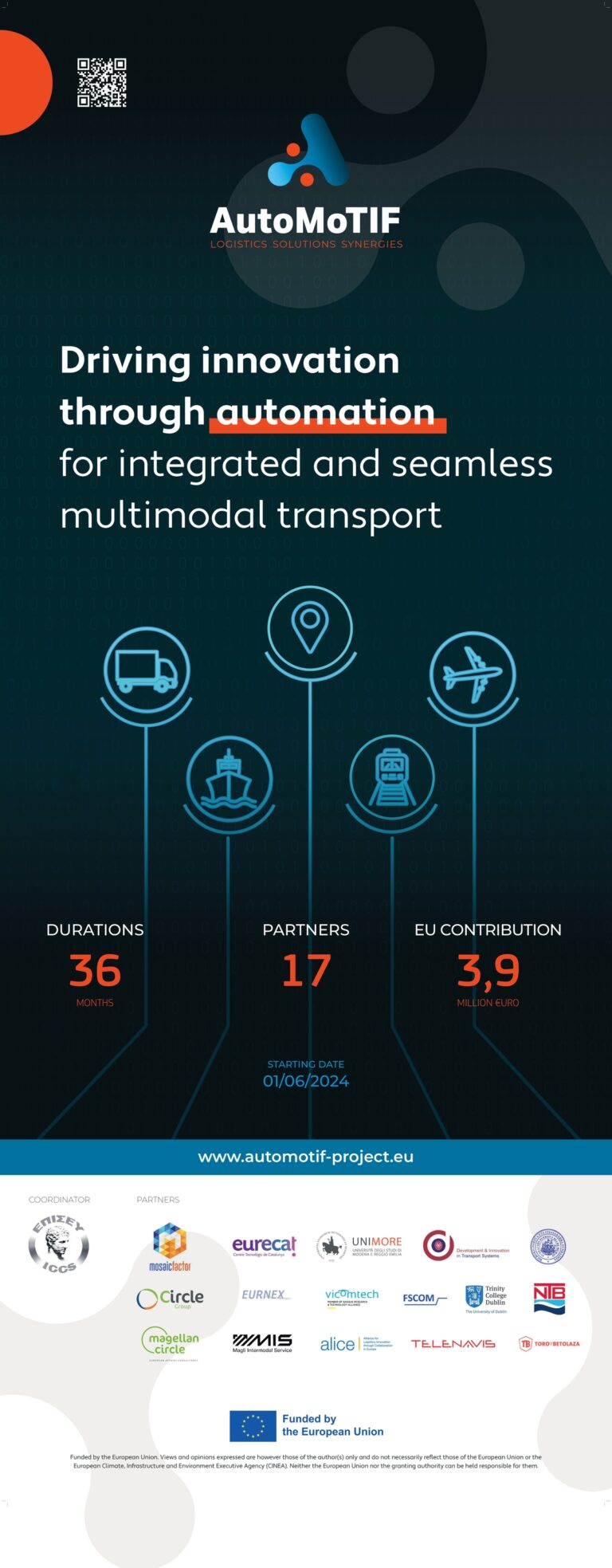The AUTOMOTIF project is at the forefront of advancing automation in multimodal transport systems across the intra-European network. Aiming to improve the interoperability and integration of automated transport systems, AUTOMOTIF seeks to transform the logistics supply chain, improving efficiency and sustainability through operational automation.
AUTOMOTIF is built around five S.M.A.R.T. objectives designed to address both the current challenges and future needs of freight transport:
By bridging the technological and regulatory gaps that currently hinder the integration of isolated automated systems, AUTOMOTIF will significantly increase the efficiency and coherence of multimodal logistics operations. The project’s inclusive approach ensures that advances in automation are aligned with the needs of users and society, promoting safer, cleaner and more efficient transport solutions.
AUTOMOTIF is set to expand upon the current state of the art through:
The project collaborates with key strategic partnerships including CCAM, Zero Emission Waterborne Transport, and EU Rail JU, ensuring that the solutions developed are robust, scalable, and in line with European transport policies.

Website: https://automotif-project.eu/
LinkedIn: https://www.linkedin.com/company/automotifeu/
X account (Twitter): https://x.com/AutoMoTIF_
Project Manager at ALICE: Giuseppe Luppino
Related LinkedIn posts
All AUTOMOTIF Project related past events, news and documents
